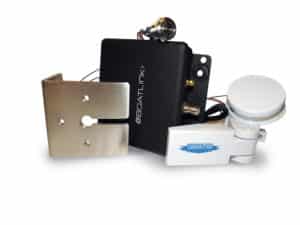Basic Knots – Composite Knot
Basic Knots – Composite Knot
Tie a loose overhand knot in one end of the heavier mono and feed the tag end of the light mono through the loop of the knot.

Basic Knots – Composite Knot
Working away from the knot, make four to six wraps around the heavy line with the light mono.

Basic Knots – Composite Knot
Feed the tag end of the light mono under the first wrap at the overhand knot. Cinch the overhand knot in the heavy mono tight first, then pull both the standing and tag end of the light mono to snug the wraps. Pull the standing lines in opposite directions to lock the knot and trim both tag ends.









